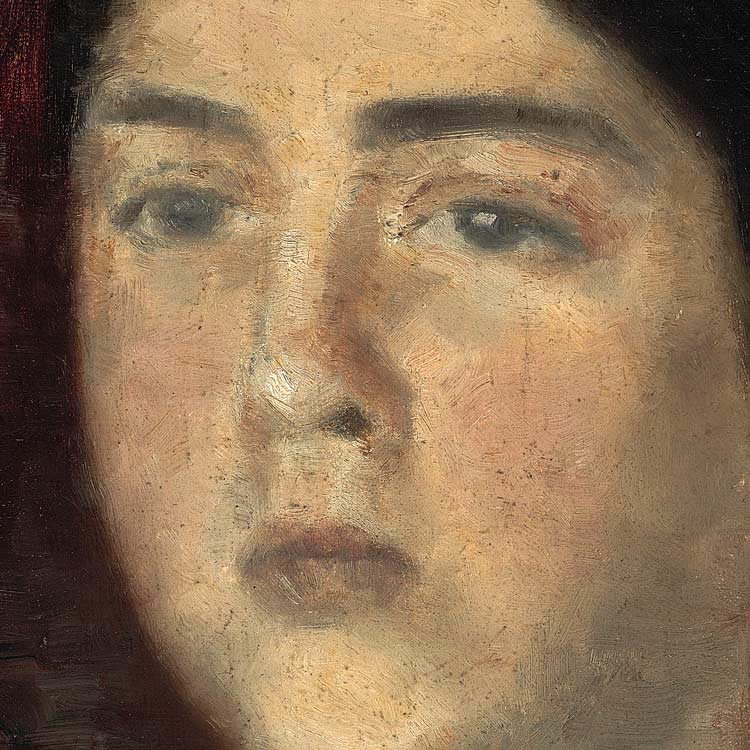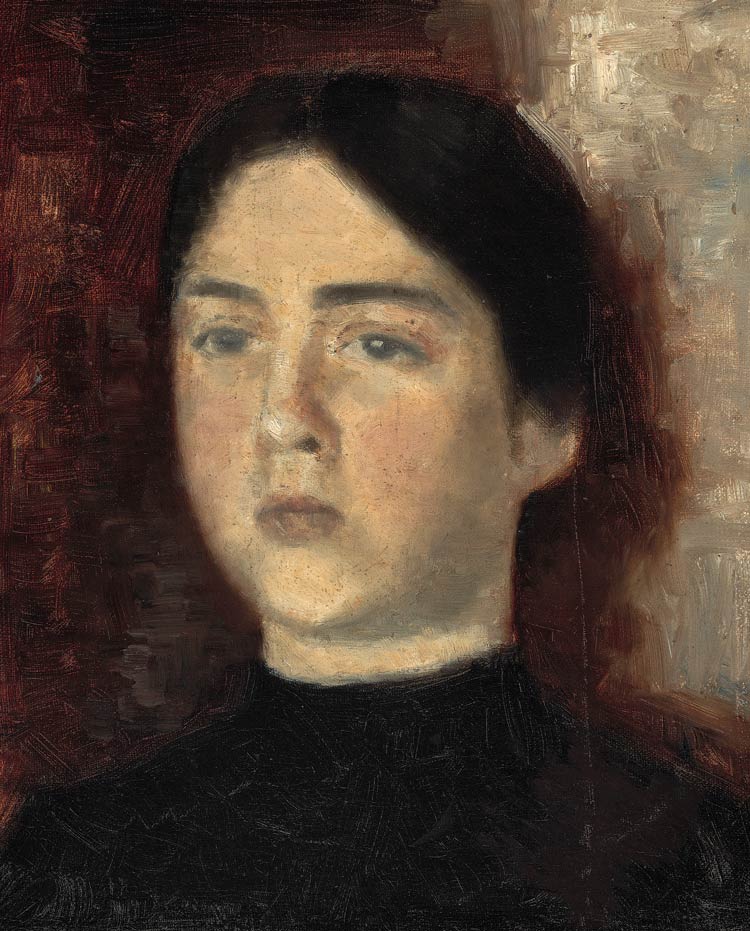Before Ida – Early Portrait of Vilhelm Hammershøi’s Sister
Vilhelm Hammershøi continues to achieve record hammer prices worldwide, and at our Live Auction on 14 June the earliest known portrait of the sister Anna Hammershøi is up for sale. She was an often used model in an important phase of the young Vilhelm Hammershøi’s artistic development, and the work remained in her ownership until her death in 1955.
In the later works of Vilhelm Hammershøi (1864-1916), it is often his wife Ida Hammershøi who is the model for the female figures with their backs turned, which have almost become the artist's trademark along with his interiors. Before he married Ida, however, it was the artist's immediate family, in the form of his mother Frederikke, younger brother Svend, and sister Anna, who were used as models.
An Alluring DistanceHammershøi was close with all three of these members of his family throughout his whole life. The close relationships with the models give the already enigmatic works another layer of interpretation. Despite the fact that Hammershøi portrays family members, there is an initial distance to those portrayed due to Hammershøi's distinctive style, which at first glance can seem blurred and loosely sketched. As a viewer, one has to look more closely in the attempt to see the person in the portrait, and thereby we are drawn closer to the details of the portrayed than if the work had been painted in a conventional way. |

|
"By insisting on the techniques that support a sense of disappearance: transparency, blurriness and introversion, the artists paradoxically emphasize the images’ presence more sensually by drawing us even closer to the subject."
Gertrud Oelsner and Annette Rosenvold Hvidt in "Vilhelm Hammershøi. On the Trail of the Open Picture” (2018).
Woman Seen from the Front
In the present portrait, we get close to Anna's face, but she does not look at us. Her gaze is inward, engrossed in her own thoughts in her very own space. Rather than being a 1:1 reproduction of the sister’s features, it is still the enigmatic mood that dominates. The work is deliberately blurred so that we don't get a precise sense of Anna's face right away. For Hammershøi, it is as much about the artistic expression as it is about capturing the sister's personality. He is going for something other than a passive reproduction, where the likeness is not the overall goal.
"A portrait is also always a projection of the artist himself."
Poul Vad in "Hammershøi – Work and life" (2006)
The Artist's Place in the WorldHammershøi's art has often been described as isolated from the contemporary art scene, but he certainly had an idea of what other artists were working with at the time, such as the American James Abbott McNeill Whistler. More broadly speaking Hammershøi's own interest in the medium of photography has become more evident as a source of inspiration for his style and choice of framing. His art can today be seen as part of a larger historical move away from the naturalistic ideals towards a more subjective rendering of reality, where the artist's own experience of the world is not subdued but emphasized in the work. |

|

|
Connection to Censored WorkThe portrait up for auction is the earliest known work of the sister and belongs to a series of paintings with Anna as a model, which Hammershøi made as a young painter in the mid-1880s. This series includes such important early works as Hammershøi's debut work at Charlottenborg "Portræt af en ung pige" (Portrait of a Young Girl), 1885, and “En ung pige, der syr” (Young Girl Sewing), 1887. The latter was rejected by the Charlottenborg censorship, which caused great anger and frustration among many artists. In response to the censorship committee's outdated view of art, the artists created, with the French Salon des Refusés as inspiration, Den Frie Udstilling (The Free Exhibition), where Hammershøi exhibited annually until his death in 1916. |
First Piece in the Story of Hammershøi's ArtFriends and family continued to be an inspiration for Hammershøi in his art, and with the early works of Anna Hammershøi, the sister played a significant role in the period when Hammershøi found his place as the renowned artist he is in art history. The present portrait is the first piece in this story, and it is understandable that it was in Anna's possession until her death in 1955. As part of Bonhams' network of global auction houses, Hammershøi's portrait of Anna Hammershøi will be offered at a Live Auction on Wednesday 14 June at 6 pm in Copenhagen. Here it can also be experienced at the preview from 7 to 11 June. Later in the year, Bruun Rasmussen will hold a theme auction entitled "Hammershøi and Friends", where Hammershøi's works can be seen in conjunction with works by artist friends such as Carl Holsøe and Peter Ilsted. |

|

For further information, please contact:
|
|
Julie Arendse VossJulie Arendse VossHead of department / 19th Century & Old Master Paintings / København |
